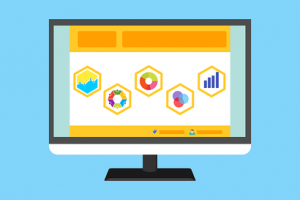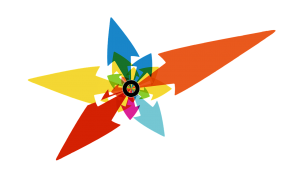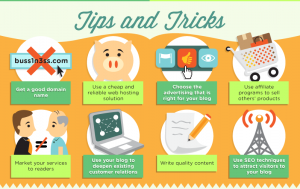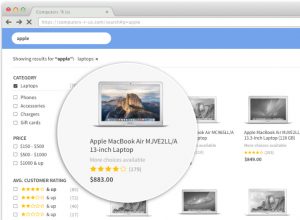The visualization of the data makes it possible to understand the importance of the data by placing them in a visual context and thus better expose them. Only, the representation of data is still laborious for many.
Are you a salesperson trying to persuade your clientele, a technology expert at the start of a start-up or an executive that makes business decisions? Know that the data is your partner! To be taken into consideration in order to make better strategic decisions, the in-depth data also allow the creation of beautiful representations and relevant interpretations.
The first step is to accept your relationship to the data: you are partners forever. Once you understand this, there is an important consideration that will define how to visualize the data: the context from which they come, which also defines the audience interacting with them.
Here we will discuss some good practices derived from data visualization and data communication from and without Google.
The data are your partner, made with!
Data, the Big Data are no longer “the great trend of next year”, and for good reason, the data has become a true member of the team. But not everyone can understand it and use it optimally, which means that many decisions are always made according to a sort of ‘intuition’, evidenced by the Global Data and Analytics survey of research snipers, Reporting interesting figures on how often managers use the data during the decision-making process.
You will have understood that data education is a tortuous road and the journey looks promising.
One of the reasons for this is related to the well-known phenomenon known as “mathematical anxiety“, where people are afraid of mathematics because of past difficulties and traumas. Each of us interacted with data analyzes (at work, in newspapers or in academic research) that were created by clumsy communicators, people who could be astounding statisticians but did not have the ability to Transmit the stories behind the numbers. This creates anxiety and could prevent professionals from even trying to understand the data.
aThe real reason why the data community does not grow as it should is because professionals are not confident enough with numbers and graphics.
Here are some simple tips to overcome this fear of analysis:
- Never make fun of those who do not understand a picture
- Step by Step
- Make the analyzes more fun
When you create a visualization, you can affect other people positively and negatively. If you create a complex, non-intuitive visualization, you may create a phobia among some of your collaborators, and they will always hate numbers and statistics. However, if you create a powerful and beautiful visualization, you could persuade some of your collaborators of the actual benefits of viewing the data and its interpretation.
Here are some ideas that could help you create better stories with the data, both for businesses as well as in general.
Data visualization adapted to companies and beyond …
There are many ways of communicating data, but choosing the right format will depend on where the data will be published or presented: the context. Is it a daily performance report or a quarterly results presentation? If not a behavioral analysis using web data? Or interactive visualization showing global trends?
Break down the representations of data into two main branches: reports or analyses of companies, and visualization of the world. These groups may have very different characteristics and take stock of each group separately.
Reports or business analyzes
In the video below, Daniel Waisberg lawyer analytics at Google and founder of the blog Online Behavior gives the floor to Avinash Kaushik, web evangelist at Google. Together they discuss techniques for creating good representations/interpretations of data, with a focus on business.
Avinash notably explains how not to make stupid mistakes when using data in a commercial context.
It then makes the differentiation between three main types of visualizations:
- The representations and interpretations elaborated and presented with the intention of changing the opinions of the people on a complex subject.
- Strategic analysis of business results presented to managers.
- The daily reports used to make most small business decisions.
Avinash then distinguishes the “all in one” analysis of a narrative representation, which allows for more complex visualizations, and daily reports then supposed to be self-sufficient while helping people to make decisions for themselves.
Given the circumstances, data delivery is a good start when designing your interpretations because they will determine the presentation and the level of complexity that can be used.While each visualization should strive to simplify, a daily report (and corporate visualizations in general) must be extremely clean and explicit, as the data scientist (or any other Big Data pro ) has developed the data representations Will not be there to help the decision maker.
“In a commercial context, a visualization of the data must do its job well, or to answer the question:” so, what? “. If your data does not answer this question, and if there is not a powerful overview that animates the action, all you have is a custom data table, it looks very nice, but no use. If you want to instill the change, you need to get the simplest way to present the data, and once you have it, ask the question. Once you have answered it, ask yourself if this representation can help you quantify an opportunity, determine success. “, Council Avinash.
Visualization and representation of the world
Fortunately for our society, visualizations are increasingly used in a wider context, where the goal is not to understand the activity or monitor performance but to educate the public and change the mind people. There are excellent examples of visualizations that make the difference, but probably the most famous are the movement maps of Hans Rosling, where he uncovers several myths about global development.
Basically, here are two really important things you need for a good representation of data:
- It is self-sufficient; Even out of context, the reader should always be able to understand what a chart is, because visualization tells a story.
- It remains easy to understand, the visualization should integrate data in layers so that the curious can explore each one.
As you can well understand, the stakes of data visualization are real and more important than ever.
Digital & Social Articles on Business 2 Community(61)
Report Post





